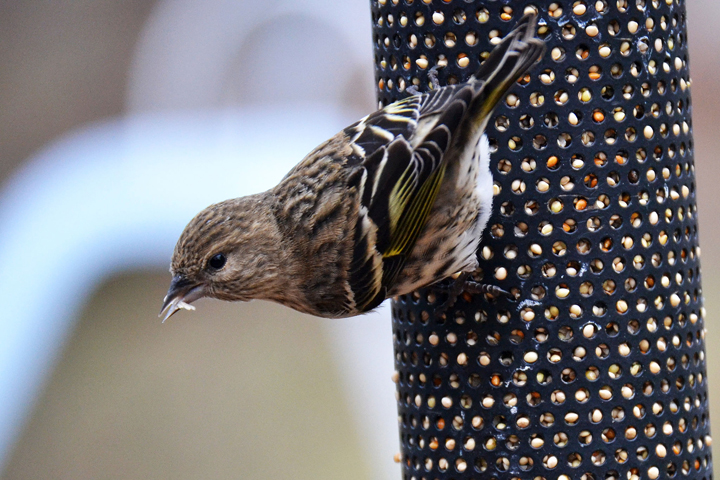TORONTO – Decades ago, birdwatchers noticed an unusually high number of birds migrating farther south than normal, but the reason why wasn’t well understood. Now, a new study is linking the change in migration patterns to changes in climate patterns.

READ MORE: Birding hobby soars in popularity across North America
The study is a true merging of interdisciplinary science: it used citizen science — where everyday people can contribute to studies or projects — and climate data. The picture it paints is one that shows a direct link to the variability of climate and how it affects our forests.
The study looked at birds that live in Canada’s boreal forests, specifically the pine siskin. The researchers found that changes in rainfall and temperature patterns are behind “drive-and-bust” cycles in forest seed production: one year the forest may produce an abundance of seeds which are able to sustain migratory birds. But other years seed production may dry up. This cycle forces a large number of birds to travel farther south, sometimes up to thousands of kilometres from their normal winter range, something called an irruption.
“We’ve known for a long time that weather was probably important, but prior analyses by ecologists have been unable to identify exactly what role weather was playing in this phenomenon,” said ecologist Walt Koenig, a senior scientist at the Cornell Lab of Ornithology and co-author of the new study.
The study used birding data collected from Project FeederWatch a citizen science program run by the Cornell Lab of Ornithology which provided it with more than two million observations of pine siskins since 1989.
“It’s a chain reaction from climate to seeds to birds,” said atmospheric scientist Court Strong, an assistant professor at the University of Utah and lead author of the study.
One question the study raises is what the impact of global climate change will be.
Ian Warkentin, professor in the Environmental Sciences program at Memorial University in Newfoundland, who did not take part in the study, said that we’re already seeing changes in birds due to climate change.
READ MORE: Trial over death of thousands of birds in flare at Saint John gas facility delayed
“The kinds of things that have been documented over the last 20 years or so is that as we have seen warmer periods during our winters — we still have pretty cold times, but we have seen in general an increase in temperatures — is that birds are wintering farther north than they used to.”
Birds saying closer to their breeding grounds tend to give them an advantage, too: they may head north sooner which enables them to produce more broods.
“Clearly it’s advantageous to only go as far south as you have to,” Warkentin said.
Warkentin, an ornithologist, said that irruptions have been observed for a long time and praised the study for being able to tie climate, ornithology and citizen science together to get a more robust picture and better understanding of the elements at work in this natural phenomenon.
“We’ve seen these kinds of irruption patterns for a very long time…and so clearly this is a natural phenomenon. We’re just getting a better picture of why it is occurring.”



Comments